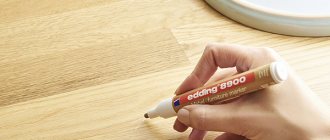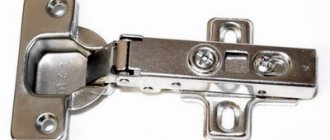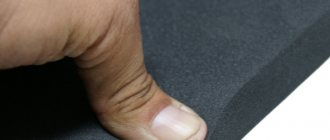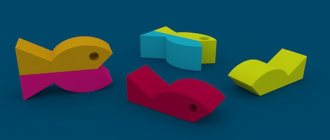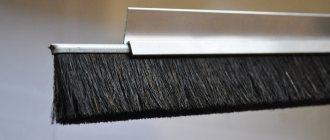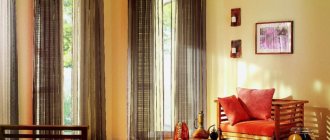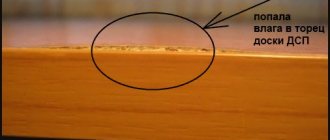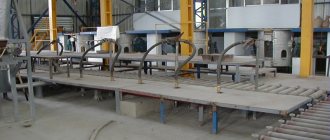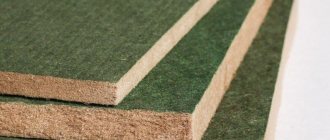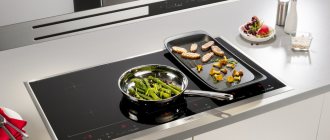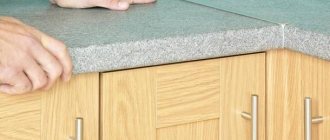In addition to traditional lumber made from natural wood, materials based on wood fibers and ordinary shavings have long been used for use in a variety of structures. In practice, the use of fiberboard and chipboard boards can significantly save forest resources, because they are made practically from industrial waste. But, despite the similarity and the same raw materials for manufacturing, these materials have different technical characteristics and purposes. That is why, in order to use them correctly, you need to know how fiberboard differs from chipboard.
Chipboard - characteristics and purpose
The production of chipboards or chipboards is based on pressing technology with sequential heating. The main raw materials for production are sawdust from coniferous and deciduous trees. After cleaning and grinding to the required fraction, the sawdust is mixed with an adhesive composition and, after forming a homogeneous mass, goes into a pressing-drying machine. This is where the formation of particle board occurs.
Under a hot press, a texture is formed in which the sawdust of the outer layers forms a monolithic dense layer, and the inner one has a looser consistency due to the unstructured arrangement of the sawdust. After drying at a temperature of about 190 degrees, the material is able to withstand heavy loads and is used as a basis for the manufacture of furniture, the construction of partitions and for the decorative design of premises.
The advantage of such a chipboard sheet is its density. The industry produces different sizes of slabs, the thickest having a thickness of 50 mm. Chipboards are easy to saw with a hand and electric saw. When processed, like natural wood, it can be sanded, milled, impregnated with impregnations, applied with a decorative coating and painted.
The smooth surface of the sheet allows you to make figures of different shapes from it; unlike wood, it does not have fibers oriented in a certain direction. But on the other hand, unlike wood, chipboard slabs are not able to withstand the load that boards of such thickness can withstand.
The range of particle boards includes boards for different purposes:
- Unpolished slabs;
- Sanded chipboard;
- Laminated chipboard;
- Chipboard is waterproof.
They vary in density and water resistance. During installation, fastening is carried out using the adhesive method, using self-tapping screws, screws, nails and furniture bolts.
The disadvantages of the material include poor water resistance, the impossibility of reusable use for installation in construction - holes for fastenings must be made in another place.
Laminated fiberboard: a ready-made finishing solution
The use of laminated fiberboard is very popular today. A special mixture is applied to the material, which consists of certain synthetic resins. Thanks to this technology, these boards have increased moisture resistance and strength.
In construction stores you can buy laminated fiberboard of the following varieties:
- Tiled type. This brand of fiberboard has a wide range of standard sizes ranging from 30x30 cm to 100x100 cm. Such boards are fastened using a tongue-and-groove connection using special clamps or staples. The use of slabs allows you to create interesting patterns and ornaments. Every year the industry produces fiberboards with new colors and textured patterns.
- Fiberboard for lining. This is a new and more modern format of material. In terms of its connection method, it is similar to wooden lining. This sheet material has standard sizes. The joining of sheets occurs in the same way as tile-type fiberboard. This type of fiberboard is used for sheathing the surface of walls and covering floors. The material has a high degree of moisture resistance.
- Leaf type. This is a universal type of laminated fiberboard. It has a lot of options for textures, colors, sizes and methods of attaching the material to the ceiling, floor, and walls.
Color options for laminated fiberboard panels
Areas of application of laminated fiberboard
Laminated fiberboard has certain properties that are taken into account when choosing its further use. Due to their high sound insulation rate, such slabs are used for those rooms where it is necessary to achieve maximum insulation. This applies to radio broadcast cameras and recording studios.
Helpful advice! Laminated fiberboard has proven itself well as an aesthetic and soundproofing material. Therefore, it will be a real find for interior decoration of office premises and classrooms of educational institutions.
This universal building material is widely used in the construction of light arches, interior partitions, and suspended ceilings of complex design. Only this type of fiberboard can be used for cladding the facades of furniture walls. Laminated fiberboard panels are increasingly being used for walls that do not require further finishing.
You can buy fiberboard sheets at a fairly low price, which makes this building material one of the most affordable in construction among other analogues.
When calculating the total cost of construction and installation work using fibreboard, it is worth knowing how much a fiberboard sheet costs. The price of each panel is determined taking into account the size, variety and place of purchase. Online construction stores offer more reasonable prices compared to market prices.
Fiberboard with a laminated surface can be used to decorate the walls of premises
Fiberboard
Fiberboards are similar in manufacturing technology to chipboards. The only difference in this technology is the raw materials. If crushed shavings or sawdust are used for chipboard, then wood flour or wood dust is used for fiberboard. The binding components also differ; in the first case these are not mineral adhesives, in the second they use synthetic fibers and polymer additives.
The rest of the technology is similar, pressing at high temperatures. The prepared mass is rolled out to the required thickness, after which it enters the drying press. As a result, after drying, a canvas with a thickness of 2 to 10 mm is obtained.
Fiberboard is dense, which is why it is often used for packaging equipment and machinery. Along with its density, it bends easily and takes the desired shape. It is even easier to attach it to structures - it is easily fastened with nails, self-tapping screws and, importantly, construction staples.
Wood fiber sheets are used in construction, design, and even art. Just like chipboard, there are several types of fiberboard - plain, laminated, painted and sanded.
Safety
Unfortunately, both materials can be toxic. In the manufacture of chipboards, phenol-formaldehyde resins are used, which are hazardous to human health. Fortunately, many modern manufacturers are trying to solve this problem by using urea when creating slabs. Manufacturers coat slabs with these compounds, which makes them less toxic.
The situation is worse with fiberboard. Often their toxicity exceeds permissible limits. Therefore, when purchasing fiberboard, you should ask the seller about the availability of a hygienic certificate of conformity. The E1 designation on the fiberboard packaging indicates that the product is quite clean from an environmental point of view. You can take a similar product.
What are the similarities and differences between chipboard and fibreboard?
When comparing chipboard and fiberboard, it is necessary to understand the purpose and conditions of use of the material. With the same thickness and size of materials, the difference will be observed primarily in mechanical strength. Particle boards can withstand greater loads than fibreboards. The difference when examining the cut is immediately noticeable - in the first one you can see chips of different sizes, and in the second one, it has a homogeneous mass. The sheets will look different even after exposure to moisture - wood chips will swell even after being in water for a short time. For wood fiber sheets, short-term exposure to water is not dangerous.
With the same thickness, the thermal insulation properties of fiberboard are higher, but when loaded, the advantage is on the side of chipboard. The differences also lie in the quality in which one or another material will be used. Chipboard panels have found application in construction and the production of cabinet furniture. Fiberboard is mainly used as raw material for packaging and decoration. The only place where you can’t do without it is in the manufacture of cabinet furniture - all the back walls of cabinets and chests of drawers, as well as the bottoms of drawers, are made of high-quality fiberboard.
Fiberboard: what is it?
Fiberboard is a building material that is made from wood fibers with the addition of binding adhesive additives and water-repellent chemical components (“wet method”), or without their use (“dry method”) by pressing or drying wood pulp, which is formed in the form of a rectangular carpet
Fibreboard is produced in one of two ways - wet or dry
Manufacturers use waste from sawmilling, woodworking, and combustion of plants as starting material. Coarse raw materials are processed into the necessary fibers by steaming and grinding in defibrators. Synthetic resins are used as a binding component in an amount of 4-7% of the ratio of hardwood and softwood fibers.
To increase the moisture resistance of the material, paraffin, rosin or ceresin are introduced into the wood fiber mass.
The production of fiberboard is one of the most promising methods for using wood waste. This material is widely used in modern housing construction to achieve sound and thermal insulation of walls and floors of premises, in the manufacture of interfloor ceilings, finishing of internal elements of premises, in the manufacture of furniture and packaging containers.
The history of the emergence of fiberboard boards
In 1858, the scientist Lymon first patented his discovery. Later, the scientist Munchon improved the technology for manufacturing fiberboard. He suggested using hot pressing equipment. At this stage, no binding ingredients were used in the production of the material.
The moisture resistance of the material is ensured by paraffin, rosin or ceresin
And already in 1924, the American scientist Mason proposed a modern method for producing fiberboards using the “wet method”, as a result of which the final material had a high density. Fiberboard production technology
Fiberboard is manufactured on the basis of a technological map, the structure of which has remained unchanged for more than fifty years. This process consists of several stages:
- Washing of wood pulp. Sand and other debris are removed from it mechanically using adsorbing units.
- Removal of metals from a mixture using electromagnets in special separator installations.
- Grinding wood chips. Here you set the degree of grinding, ranging from coarse to finer.
- In a defibrillator unit, polymers, resins and paraffin are mixed into the total mass.
Further, the manufacture of fiberboard is carried out using the “dry” or “wet” method. The “wet method” is more environmentally friendly because it uses a small dose of a binding mixture, which is toxic. The density and technical indicators of fiberboard directly depend on the manufacturing method.
Technical characteristics of fiberboard depend on the method of its production
Which material is better to choose
The use of this or that material depends on the conditions where it will be used and the tasks that are assigned to it. To insulate the floor, you can use both materials as a substrate for the final coating. But at the same time, if the floor has uneven surfaces, preference is given to chipboard panels, and if the finishing screed is made with high quality, an ordinary fiberboard sheet with a thickness of 4-5 mm is sufficient.
In the manufacture of cabinet furniture, chipboard is used for the walls and facade; it is entrusted to become load-bearing walls. But for fiberboard there is only application in the form of a back wall. On the other hand, it is more often used for the design and manufacture of upholstered furniture - sofas, trestle beds, couches. Due to the fact that fiberboard can be bent, backs and sides are obtained from it.
These materials also find their use in construction. Both chipboard and fibreboard are used for internal partitions, however, given their characteristics, they are not suitable for rooms with high humidity. On the other hand, a partition made from chipboard is not only stronger, but also cheaper - the frame for it will cost less than for fiberboard.
Knowing all these features, it is not difficult to determine the possibilities of using materials in practice. But be that as it may, working with them does not require great skills and abilities.
Options for using slabs and their disadvantages
During construction and repair work, chipboard is used for dry screeding and flooring installation. Also, such slabs are needed as a sheathing structure, which serves as reinforcement for foundations located vertically. They are also used to build canopies, partitions, fences and various pieces of furniture, including tables and beds.
The negative aspects of this material include its hygroscopicity, slight looseness and rigidity, which leads to the appearance of cracks if the slab is attached to an uneven surface. Therefore, it is necessary to take these properties into account in the process of developing a suitable design project.
Also, exposure to high humidity conditions has a negative effect on chipboard. This leads to deformation and a reduction in service life. It’s also worth considering if you want to reuse slabs to create prefabricated products. The fact is that when the fasteners are reinstalled, the material in this place begins to become covered with a network of cracks and crumble, and as a result, screws and self-tapping screws will not be able to securely fix the slabs.
Chipboards are divided into categories depending on:
- water resistance, which can be medium or high;
- density - minimal, medium or high;
- surface - it can be sanded, not sanded, or covered with a layer of laminate.
Boards that are impervious to moisture are often used for the base of kitchen countertops, pieces of cabinet furniture intended for the bathroom, as well as for various construction purposes. Laminated chipboards are distinguished by a wide choice of shades and textures; in addition, this material can withstand thermal effects and mechanical shocks.
MDF or chipboard in the kitchen, which is better?
Kitchen furniture is exposed to temperature changes, high humidity, mechanical stress, household chemicals and other active reagents. The material must resist these negative influences and ensure a long service life.
The most in demand in the manufacture of facades for kitchen furniture are MDF and laminated chipboard. They have some similarities, but differ in composition, production technology, and performance characteristics. To determine which of these materials is best suited for the kitchen, you need to consider the features of each.
Conclusion
So, answering the question “kitchen made of chipboard or MDF – which is better?”, we looked at the advantages and disadvantages of each material. Now we can easily draw the following conclusion: kitchen furniture made from MDF boards is much more environmentally friendly, more reliable and also more varied than furniture made from chipboard boards. But, alas, it will cost more (at least for the next six months).
Therefore, if you are for quality and durability, then do not skimp and buy kitchen furniture made from MDF - everything will pay you back twice as much. Well, if you are a little strapped for money, then choose the second option.
But here it is important to find out from the seller all the nuances (especially what class the material from which the product you like was made belongs to).
If you are still in doubt - chipboard or MDF kitchen - look at the thematic photos and video materials we have selected. We hope that after this you will make the final and optimal decision for you.
Manufacturing process
To create chipboard, coarse wood chips are used. Wood, chips and sawdust are used as a source of raw materials. The entire manufacturing process is carried out according to the following principle: first, the crushed raw material is dried, after which it is moistened with binder ingredients using a nozzle. Synthetic components act as binding elements. It is also useful to read about what laminated chipboard is and how it is made.
When using such ingredients in combination with paraffin-based emulsions, it is possible to obtain moisture-resistant laminated chipboard, on the cut of which specific inclusions of green conglomerates appear. Thanks to this unique production technology, the resulting product can be used for finishing and flooring in rooms where there is a high level of humidity. You can read about the sizes of chipboard sheets in our article.
In the video - making chipboard:
When processing a mixture such as chips and resin, the following material can form:
- single-layer – in this case, the chips of the poured fractions are mixed and evenly applied to the surfaces of the entire slab. In the photo - chipboard:
- two-layer - waste is used to make the underlying layer, and thin and wide shavings specially selected at the sputter are used for the front covering.
- two-layer, obtained on the basis of high-quality raw materials and core, for which lower-quality waste is used.
When the shaving carpet has been formed, it is sent for pressing, drying and cutting to the required size. If we consider what OSBI is, then the manufacturing process is also somewhat similar. Finally, the ends are polished. The grinding method is used as a finishing cladding. But this is done on the condition that the finished product will be sent for decorative cladding.
What is the technology for preparing plaster mortar?
Here you can see photos of kitchen aprons made of MDF.
What is cement made of? Check out the composition: .
Compared to chipboard decoding, fiberboards require two additional treatments after splitting the original raw materials into chips:
- Coarse grinding using defibrators.
- Fine crushing in refiners.
During this production, wood is split into individual fibers. After receiving the required mass, it is sent for subsequent processing in tanks in which the product is soaked in a water mixture. As a result, it is possible to give the slabs strength and water-repellent characteristics. After such preparation, the finished mixture is sent to casting equipment, where thermal pressing occurs at a temperature of 210-230°C and a maintained pressure of 3-5 MPa. Although many are more interested in MDF panels for wall decoration.
Finished fiberboard sheets can be subjected to additional thermochemical hardening treatment. As a result, it is possible to impart hardness to the sheets, which will allow them to be used for the manufacture of structural parts of buildings, arranging the subfloor, and making internal partitions.
What a buyer of custom-made kitchen furniture needs to know about materials
- A – acrylic. Acrylic is called MDF boards, coated on the front side with acrylic varnish in 12 layers above the pattern. It is no coincidence that MDF-based acrylic varnish panels are called high-gloss panels: they glow much more than any other panel. Acrylic used in the manufacture of kitchen facades meets all environmental safety requirements. Most other acrylic materials are resistant to various damages: scratches, chips, deformations. The color is very rich, with a competent approach to design you can create a truly unique interior of its kind. The kitchen will not lose its attractiveness even after many years - the color does not disappear or fade.
- D – fiberboard. DVP – This is familiar to all of us. The backs of most cabinets, the bottoms of drawers, those sheets that feel rough to the touch are fiberboard. (Most expensive furniture uses plywood instead of fibreboard, but it's not much better in terms of performance). Like MDF, fiberboard is made from compressed wood dust, but in the case of fiberboard parts, the wood is steamed and the board is produced by wet pressing. That is why the “back side” of the fiberboard texture resembles the surface of cottage cheese with a “mesh”, like wet gauze.
- K – Corps. The body is, in fact, two side walls, as well as the top, bottom and back walls of your furniture. Shelves and drawers (filling) are also included in the concept of the Body.
- K – Credit for materials. A loan for custom-made kitchen materials is provided not by the manufacturing company, since by law it does not have the right to carry out such transactions with money, but by a bank or other similar enterprise. When using a loan, the bank usually takes a certain percentage of the loaned amount as its own earnings.
- K - ABC edge. Impact-resistant and with excellent consumer qualities, this edge has proven itself in furniture production. Unlike the well-known melamine edge, it is stronger and therefore a more durable product. If the melamine edge is no more than 10 years, then for the ABC edge, fifty years is not a period. It is more likely that the chipboard will disappear or the glue will dry out than the edge itself will lose its original appearance.
- K – melamine chrome. Paper-based edgebanding tape is an excellent material for processing the ends of furniture panels. It is produced by impregnating decorative paper with melamine resins, increasing their wear resistance and treating the surface with varnish to prevent evaporation of the resins. The material is a film with a thickness of 0.3-0.4 mm.
- L – LDPE. Chipboard is a laminated chipboard made from sawdust and chips impregnated with a binder, namely formaldehyde resins. Chipboard is used to make furniture cabinets and is often used for fronts. Chipboard is an excellent material for making furniture; it is quite durable and has a very large color palette.
- M – MDF. MDF is a sheet made from very small wood chips. The difference between chips for chipboard and MDF is both between the products that pass through the meat grinder and the products crushed by the mixer. The wood particles are attached with lignin and paraffin under high pressure. MDF is considered a more environmentally friendly material than chipboard.
- P – film. The phrase film facades is commonly found. Such facades are made on the basis of MDF boards, onto which figure milling is applied. On top they are covered with PVC film with a thickness of 0.3-0.5 mm. The variety of PVC films in color and texture is very high, and they have different degrees of gloss.
- R – Installment plan for materials. Installment payment for materials is provided by the manufacturing company when selling goods to the buyer, if this is stipulated by the contract. Installment plans are usually interest-free.
- C – Discounts. Discounts are provided by the manufacturing company for its customers. Discounts can be temporary (Promotion) or permanent. Real discounts cannot be 20%, 30%, even a 10% discount is extremely rare, because... this significantly reduces the manufacturer's income. Discounts of 20-30% are a common trick, or deception of the buyer, in which the price of the product rises very high, then from this inflated price a discount is made to the regular selling price. The buyer does not receive a real discount.
- F – Facades. Facades are the doors of your cabinets and other furniture, as well as non-opening surfaces located on the front side of the furniture.
- F – Accessories. Accessories are various handles, legs, hooks, baskets and other metal or not very metal (for example, plastic)
Kitchen frames
Kitchen frames
- a fulcrum or a reliable foundation. Is it worth overpaying for cases that are hidden from view, or does it not matter what material they are made of? Kitchen cabinets are made from chipboard, MDF, and natural wood.
Are there frameless kitchens? It is difficult to imagine an inflatable kitchen or a stone countertop hanging in the air; rather, it is a suspended kitchen. The KamenStol company makes these too.
But frameless kitchens are still the exception rather than the rule. A hanging kitchen can surprise and make cleaning easier, but it is unlikely to be convenient for the housewife. The kitchen frame is a place for storing dishes and reliable support for the countertop.
